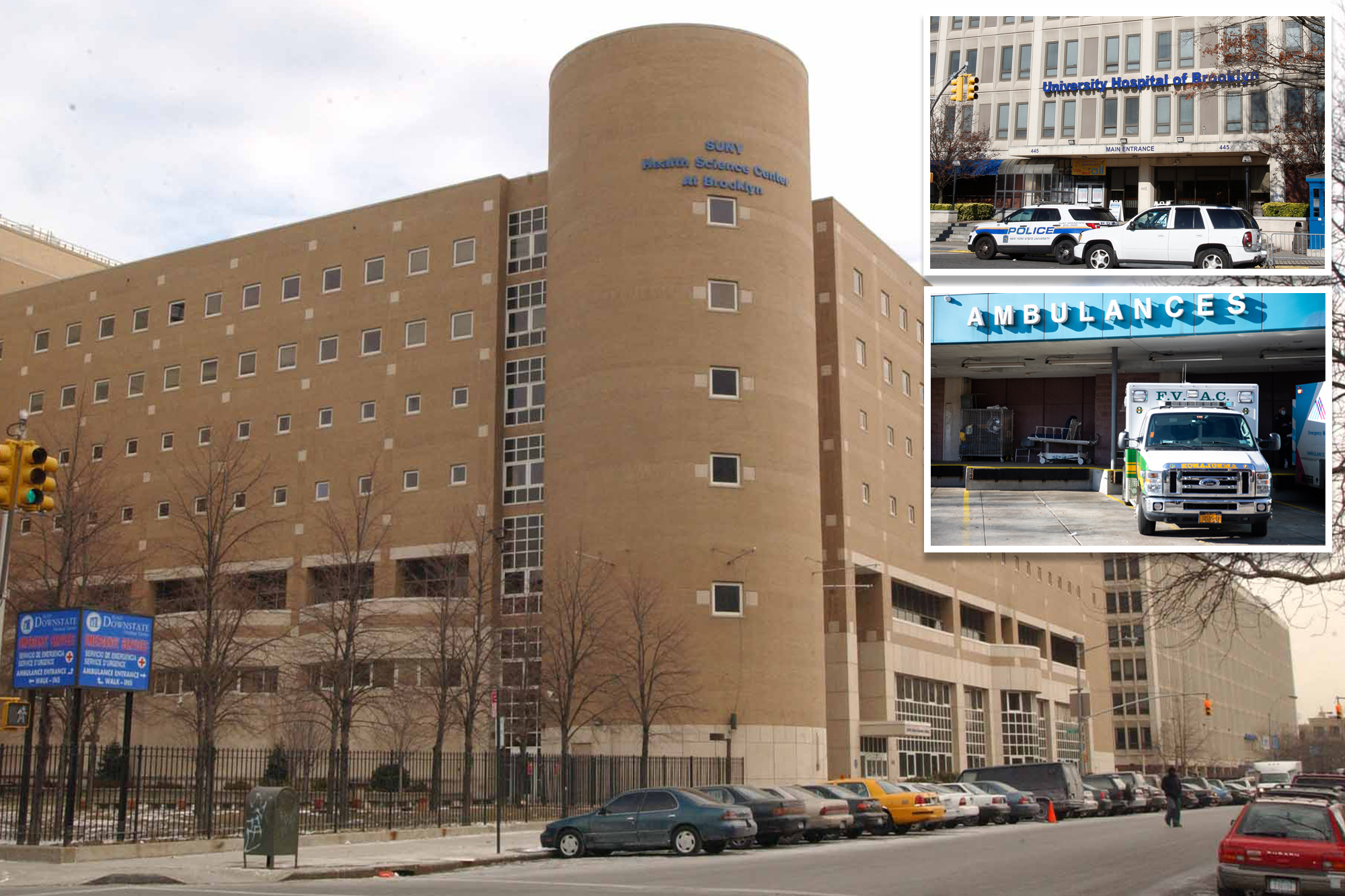
Brooklyn residents are frantic over the potential loss of medical-treatment options — and hundreds of local jobs — as the state moves forward with its apparent plan to close major safety-net hospital SUNY Downstate.
SUNY announced last month that it would significantly ramp down operations at and possibly shutter the only state-run hospital in New York City, citing billions of dollars in needed repairs at the 376-bed facility in East Flatbush, as well as an ongoing $100 million yearly operating deficit.
Patients and staff told The Post they don’t totally buy the argument that services at the facility on Lenox Road need to be drastically reduced or possibly eliminated altogether.
“It’s a tiny hospital. They’ve got to save this place, because there are no other hospitals nearby besides Kings County, and I never want to go there. It’s too big, and it’s city-run, and I don’t like city-run things,” Clara Gayle, 52, told the Post outside Downstate.
“I’m not getting any younger, and I’m not moving out of Flatbush. If they shut down Downstate, I’ll have to go to Manhattan [for services],” Gayle said..
Andrew Holness, 45, said of the hospital, “If they don’t survive this time, well, it’s been a good run, and I’ll miss them dearly.
“I guess I’ll have to take my business across the street. I don’t want to, but that’s what I’ll have to do,” he said.
Under SUNY’s “transformation plan,” Downstate’s inpatient beds would be moved across the street to operate out of a wing of Kings County Hospital. Other services – and jobs – would move to other SUNY Downstate facilities such as a branch in Bay Ridge.
“This is about allowing the health sciences university to work in partnership with our partner hospitals to make sure the community is well-served. That’s our goal here,” SUNY Chancellor John King told the Post, stressing that the changes are needed to support healthcare in central Brooklyn in the long run.
“We have this health sciences university that we have to protect, we have a $100 million dollar deficit that will cause the institution to run out of cash by summer, and we have a facility at risk of catastrophic failure,” King said.
The state, under SUNY’s plan, would chip in $300 million in capital funds to build a new facility to house outpatient services, the college’s health disparities institute and other academic programming. Albany would also establish a fiscal lifeline to keep Downstate alive in the meantime.
If the hospital is shuttered, it could be repurposed into affordable housing or space for academic instruction, officials said.
King said he wants to “minimize disruption” for staff – most of which, he says, will be retained but will have to move to other locations such as the Bay Ridge center or Kings County.
Employees from three of the four unions at SUNY Downstate – Public Employees Federation, Civil Service Employees Association, and NYS Corrections Officers Police Benefits Association – would not lose their jobs but would be relocated to other facilities under the plan, officials said. United University Professions, the fourth union, would suffer a workforce cut of 10% to 20% of its 2,300 employees at Downstate, they said. UUP reps teachers and academic support staff.
“I have found this plan from the start to be poorly articulated and filled with gaps,” UUP President Frederick Kowal told the Post on his way back from a meeting with hundreds of his worried SUNY Downstate members. “And I think it’s just a really bad proposal that needs to be dismissed.”
Kowal says he thinks SUNY’s claim that the hospital is nearing “catastrophic failure” is bogus.
“Does it need an upgrade? Absolutely,” Kowal said. “But it doesn’t deserve to close because it’s in disrepair. That is not what it’s like in that hospital. If anybody spent some time in there, you’re going to see a facility that’s good but needs improvement.”
SUNY estimates the cost of repairing the hospital at $4 billion. King said that number was the result of “extensive analysis” by the university system.
Brooklyn pols are starting to come around to King’s plan after the initial announcement led to shock and confusion. Upheaval over it was on full display last week at a state budget hearing when New York Health Commissioner James McDonald told state Sen. Zellnor Myrie (D-Brooklyn) he found out about the hospital’s closure in the news.
“I learned about SUNY’s transformation plan in the media, so I don’t have any more knowledge about that than you do,” the state’s top doc said.
Myrie then angrily noted, “The so-called transformation plan for central Brooklyn was not even communicated to the commissioner for the Department of Health for the only state run hospital in the city of New York.
“I think that’s unacceptable.”
McDonald claimed to WNCY’s “The Capitol Pressroom” a few days later that it was normal that the state Health Department would be brought later in the process. King said he has since spoken with McDonald about the plan.
Other Brooklyn pols are starting to come around to the plan as well. State Assemblyman Brian Cunningham, whose district includes SUNY Downstate, told The Post that he and other Brooklyn lawmakers met with King recently to discuss the plans.
“I am OK with us reimagining what the hospital looks like,” Cunningham said. “That has to come with no job losses, and it has to be done with community buy-in. And if we can invest $300 million and kill the debt that Downstate had previously, I think that’s a plan, if the other two conditions are met, is a plan that we can support.”
SUNY recently held a packed town hall event about the closure. Protestors rallied outside of the event but weren’t allowed inside.
SUNY says it is committed to community engagement moving forward with efforts including surveys and focus groups of SUNY Downstate staff and students as well as Brooklyn residents.














